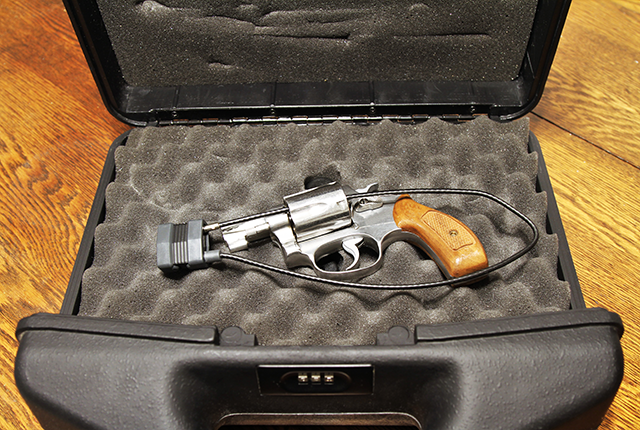
More Washington households store firearms securely
From 2013 to 2022, the portion of Washington adults who reported storing household firearms securely rose from 34.9% to 48.8%.Media Contact: Brian Donohue - 206-457-9182, bdonohue@uw.edu

The percentage of adults in Washington state who reported that firearms in their households were stored unloaded and locked rose from 34.9% to 48.8% between 2013 and 2022, a University of Washington School of Medicine study has found.
The findings appear today, July 3, in JAMA Network Open.
“This is good news,” said lead author Kelsey Conrick, a postdoctoral scholar at the Firearm Injury & Policy Research Program. “There is still a lot of room for improvement, but our state’s efforts to promote secure firearm storage appear to be working.”
Past research has associated secure firearm storage with reductions in suicide, unintentional injuries, and gun theft.
“Secure storage is a core part of being a responsible firearm owner,” Conrick said. “It keeps firearms out of the hands of children, prevents guns from being stolen, and potentially can put time and space between someone who is in crisis and a weapon they could use to harm themselves or someone else.”
The state has invested in efforts to promote secure firearm storage, including public health media campaigns and the distribution of free lockboxes and trigger locks, Conrick said.
In the study, Conrick and colleagues analyzed responses from Washington state adults to a national telephone survey conducted annually, called the Behavioral Risk Factor Surveillance System.
The survey asks adults 18 and older about a range of health-related risk behaviors, chronic health conditions and the use of preventive services. In 2013, Washington state added questions to the survey about gun storage.
The survey found that about 1 in 3 Washington households has at least one firearm. This proportion did not change over the study span, but responses indicating secure storage rose across all ages and sexes surveyed, as well as among veterans and adults living in households with children.
Secure storage did not improve significantly, however, among survey respondents in small towns and rural areas.
The findings can help guide future efforts to promote secure firearm storage, Conrick said.
“Some people in rural communities may have different attitudes towards firearms and keep them for different reasons than some people living in cities — and that can affect how they feel about storing their firearms,” she said. “To reach people, we need to meet them where they are.”
Study coauthors included Anthony Gomez, Aley Joseph Pallickaparambil and Myduc Ta from Public Health—Seattle & King County, as well as Samantha Banks and Julia Schleimer from the Firearm Injury & Policy Research Program. Ali Rowhani-Rahbar, a UW professor of epidemiology and pediatrics who directs the Firearm Injury & Policy Research Program, is the paper’s senior author.
Written by Michael McCarthy
For details about UW Medicine, please visit https://uwmedicine.org/about.